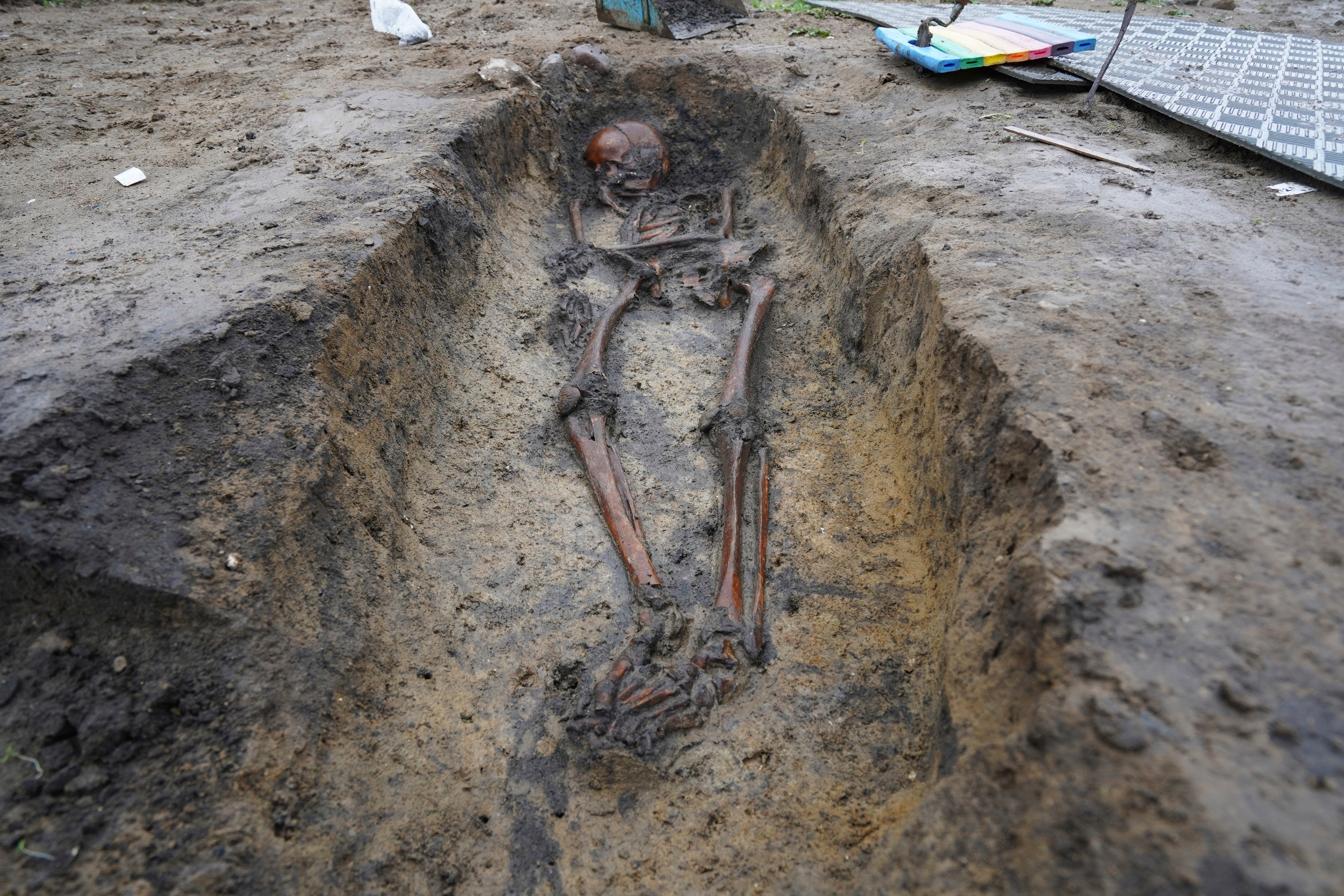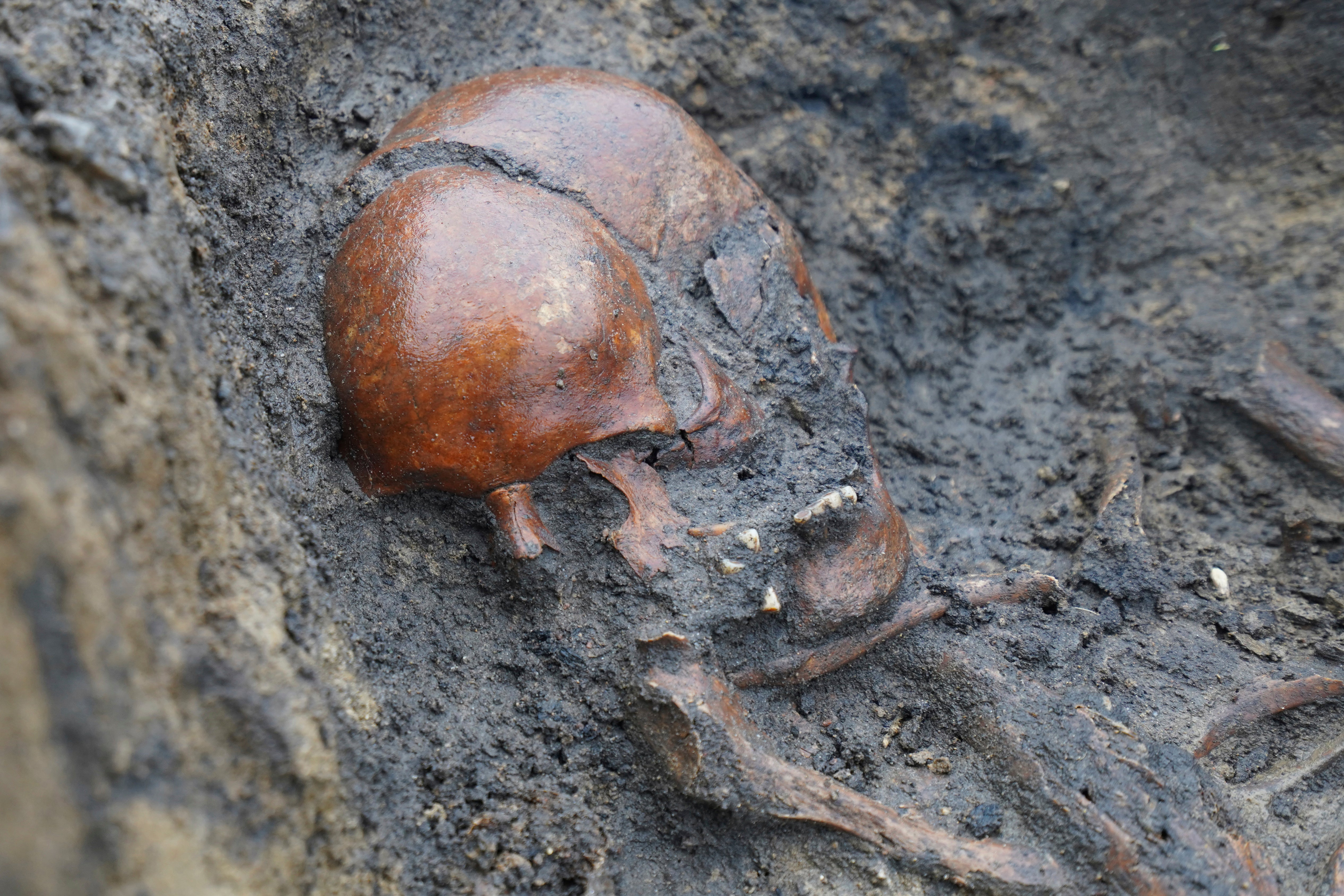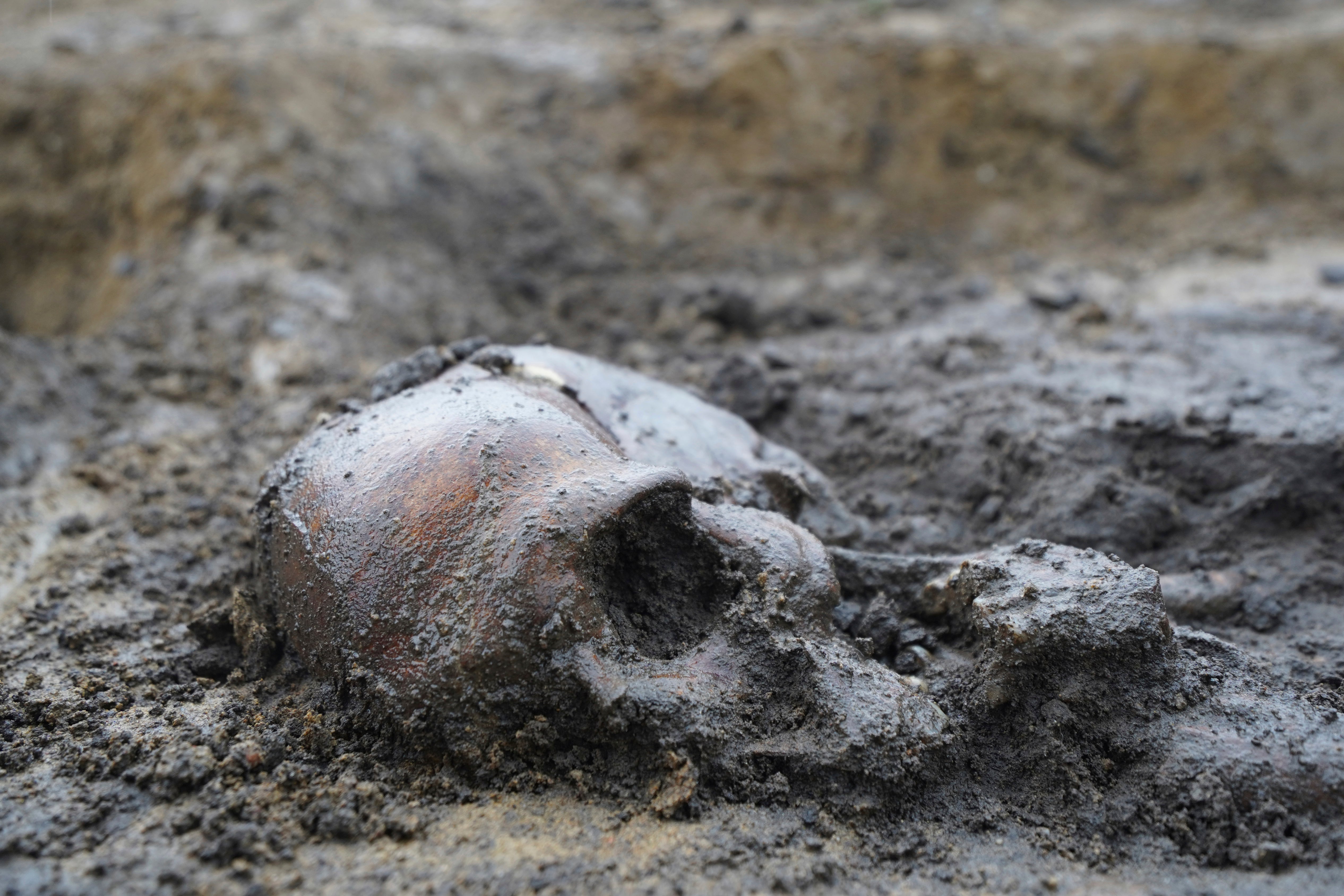What archaeologists are learning from the discovery of 50 extremely rare Viking skulls
They also found brooches, necklace beads, knives, and even a small shard of glass that may have served as an amulet

Your support helps us to tell the story
This election is still a dead heat, according to most polls. In a fight with such wafer-thin margins, we need reporters on the ground talking to the people Trump and Harris are courting. Your support allows us to keep sending journalists to the story.
The Independent is trusted by 27 million Americans from across the entire political spectrum every month. Unlike many other quality news outlets, we choose not to lock you out of our reporting and analysis with paywalls. But quality journalism must still be paid for.
Help us keep bring these critical stories to light. Your support makes all the difference.
The discovery of 50 “exceptionally well-preserved” skeletons in a village in central Denmark could hold important clues to the Viking era.
Archaeologists made the landmark discovery that included a burial ground and the skeletons.
Experts hope to conduct DNA analyses and possibly reconstruct detailed life histories, as well as looking into social patterns in Viking Age, such as kinship, migration patterns and more.
“This is such an exciting find because we found these skeletons that are so very, very well preserved,” said archeologist Michael Borre Lundø, who led the six-month dig. “Normally, we would be lucky to find a few teeth in the graves, but here we have entire skeletons.”
The skeletons were preserved thanks to favorable soil chemistry, particularly chalk and high water levels, experts from Museum Odense said. The site was discovered last year during a routine survey, ahead of power line renovation work on the outskirts of the village of Aasum, 5 kilometers (3 miles), northeast of Odense, Denmark’s third-largest city.
“This opens a whole new toolbox for scientific discovery,” said Borre Lundø as he stood on the muddy, wind-swept excavation site. “Hopefully we can make a DNA analysis on all the skeletons and see if they are related to each other and even where they come from.”

During the Viking Age, considered to run from 793 to 1066 A.D., Norsemen known as Vikings undertook large-scale raids, colonizing, conquering and trading throughout Europe, even reaching North America.
The Vikings unearthed at Aasum likely weren’t warriors. Borre Lundø believes the site was probably a “standard settlement,” perhaps a farming community, located 5 kilometers from a ring fortress in what’s now central Odense.
The 2,000-square meter (21,500-square foot) burial ground holds the remains of men, women and children. Besides the skeletons, there are a few cremated bodies.
In one grave, a woman is buried in a wagon -- the higher part of a Viking cart was used as a coffin — suggesting she was from the “upper part of society,” Borre Lundø told The Associated Press.
Archeologists also unearthed brooches, necklace beads, knives, and even a small shard of glass that may have served as an amulet.
Borre Lundø said the brooch designs suggest the dead were buried between 850 and 900 A.D.
“There’s different levels of burials,” he explained. “Some have nothing with them, others have brooches and pearl necklaces.”

Archeologists say many of the artefacts came from far beyond Denmark’s borders, shedding light on extensive Viking trade routes during the 10th century.
“There’s a lot of trade and commerce going on,” said Borre Lundø. “We also found a brooch that comes from the island of Gotland, on the eastern side of Sweden, but also whetstones for honing your knife … all sorts of things point to Norway and Sweden.”
The burial site was discovered last year, and the dig, which started in April, ended Friday. Boxes of artefacts have shipped to Museum Odense’s preservation labs for cleaning and analysis.
Conservator Jannie Amsgaard Ebsen hopes the soil may also hold other preserved organic material on the backs of brooches or knife handles.
“We’re really hoping to gain the larger picture. Who were the people that were living out there? Who did they interact with?” she said. “It’s a little bit like a jigsaw puzzle: all the various puzzle parts will be placed together.”
Subscribe to Independent Premium to bookmark this article
Want to bookmark your favourite articles and stories to read or reference later? Start your Independent Premium subscription today.